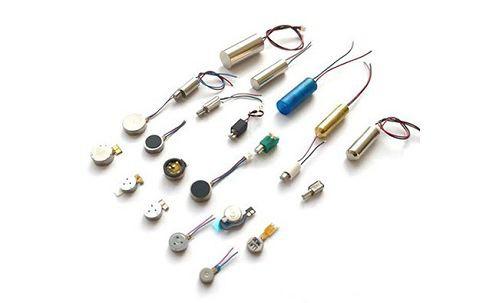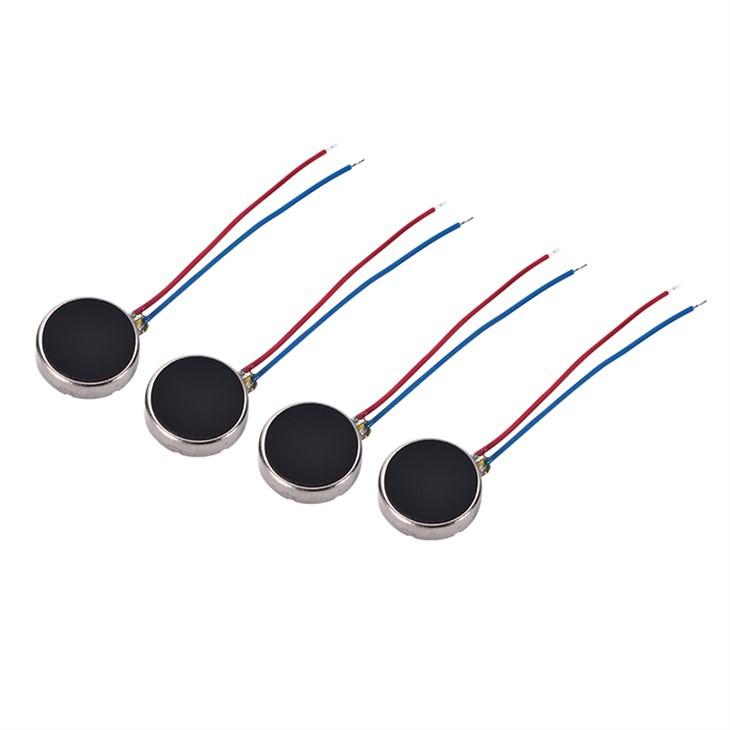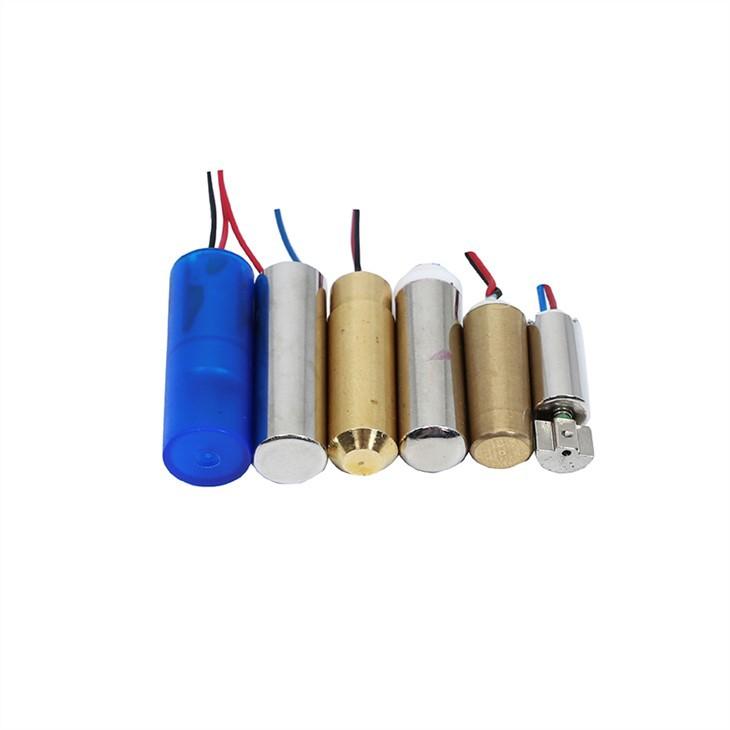The Relationship Between Frequency and Vibration: Key Concepts for Optimal Motor Performance

The link between frequency and vibration is key to motor work. Frequency shows how often motor parts move back and forth. Vibration is the physical shaking caused by this movement. Both affect a motor's speed, balance, and how well it works.
Checking frequency helps find motor vibrations and their causes. This affects how well the motor performs.
Controlling these things makes motors work better and last longer. For example, running at certain frequencies can cause harmful shaking. This can make the motor less reliable and wear out faster. Knowing this connection helps improve motor work and lowers repair costs.
Key Takeaways
Frequency and vibration are important for how motors work well. Knowing how they connect helps motors run better and last longer.
Check motor frequency and vibration often to find problems early. Fixing issues early can save money and make motors last longer.
Use tools like accelerometers and vibration testers to check motors. These tools find problems like unbalanced parts or parts not lined up right.
Controlling resonance is very important. Staying away from resonant frequencies lowers bad vibrations and helps motors work better.
Picking the right motor, like INEED vibration motors, helps motors work well. These motors are made to be strong and work well in many ways.
Understanding Frequency and Vibration in Motor Dynamics
What is Frequency and How Does it Relate to Motor Speed?
Frequency tells how many times a motor moves in one second. It connects to motor speed, usually measured in revolutions per minute (RPM). To find vibration frequency, divide the RPM by 60. For instance, a motor running at 3,600 RPM has a vibration frequency of 60 Hz.
You can change motor speed by adjusting the voltage. Higher voltage increases frequency, while lower voltage decreases it. Tools like Hall effect sensors or light interrupters measure motor speed. These tools track magnetic or light changes to calculate RPM. Knowing this helps improve motor performance and reduces damage from too much vibration.
Defining Vibration and Its Role in Motor Performance
Vibration happens when motor parts shake due to imbalance or outside forces. It is important for how well a motor works. Controlled vibration can improve functions, like giving feedback in devices. But too much vibration can cause problems like misaligned rotors or worn-out bearings.
Different motors create vibrations in unique ways. Eccentric rotating mass (ERM) motors use unbalanced weights to shake. Linear resonant actuators (LRA) use resonance for accurate feedback. Managing vibration well keeps motors running smoothly and lasting longer.
The Importance of Amplitude in Vibration Analysis
Amplitude shows how strong a vibration is. It helps find motor problems like unbalanced parts or misaligned shafts. For example, amplitude analysis can spot repeated pump shaft failures caused by resonance.
Amplitude also changes how vibrations feel, like in haptic feedback. Stronger amplitude makes bigger vibrations, while weaker amplitude makes softer ones. Amplitude and frequency both depend on motor speed, so changing one affects the other. Devices like accelerometers monitor amplitude to adjust motor performance for better results.
The Interplay Between Frequency and Vibration
How Frequency Affects Vibration in Motors
Frequency is important for how much a motor vibrates. When a motor runs, its moving parts create vibrations. These vibrations match the frequency of the motor's motion. Higher frequencies make vibrations faster and stronger. This can worsen problems like imbalance or misalignment. For example, a fast motor with poor balance can damage parts like bearings and shafts.
You can study vibration patterns to see how frequency affects motors. These patterns show how the motor reacts to repeated forces, like the spinning shaft. By studying these patterns, you can find the motor's natural frequency. This is when vibrations are strongest and can harm the motor or lower its performance.
To fix this, you need to watch and adjust the motor's frequency. Tools like accelerometers measure vibration levels and find resonant frequencies. These tools help you adjust the motor for smoother running and longer life.
The Role of Resonance in Motor Efficiency
Resonance happens when a motor's frequency matches its natural frequency. This makes vibrations stronger, which can help or hurt the motor. Sometimes, resonance improves energy use and performance. But usually, it causes too much vibration, which damages parts and lowers efficiency.
Studies show that resonance effects depend on timing and conditions. For example:
Study | Findings | Implications |
|---|---|---|
Motor resonance facilitates movement execution: an ERP and kinematic study | Looked at how resonance affects movement and perception. | Shows resonance can help or hurt motor work based on timing. |
Cattaneo et al., 2011 | Found motor actions can improve how we sense things. | Links actions and sensing to motor efficiency. |
Ménoret et al., 2013 | Showed motor improvement depends on timing. | Timing is key to better motor performance. |
Knowing about resonance helps avoid its bad effects. By finding resonant frequencies, you can change the motor's speed or design. This reduces harmful vibrations and keeps the motor working well.
Managing Frequency and Vibration for Optimal Performance
To make motors work their best, control both frequency and vibration. First, find the motor's natural frequency. This helps avoid resonant frequencies that cause strong vibrations and damage.
Use methods to control vibration, such as:
Balancing: Make sure all spinning parts are evenly weighted.
Damping: Add materials to absorb and reduce vibrations.
Isolation: Use pads or mounts to stop vibrations from spreading.
Check the motor often to keep it working well. Tools like vibration analyzers track changes in vibration over time. This helps find problems early, like misaligned parts or wear. Fixing these issues quickly prevents bigger problems.
By managing frequency and vibration, motors last longer and work better. This lowers repair costs and keeps performance steady, even in tough jobs.
Measuring and Analyzing Frequency and Vibration
Tools for Measuring Frequency and Vibration in Motors
To check frequency and vibration, you need good tools. These tools find problems like imbalance, misalignment, or worn parts. Common tools include:
Accelerometers: Measure how fast parts vibrate and find high signals.
Velocity sensors: Track how quickly parts move, great for medium signals.
Displacement sensors: Measure how far parts move, best for low signals.
Each tool has a special job. For example, accelerometers are great for spotting early bearing issues. Velocity sensors work better for general vibration checks. Advanced systems combine these tools for detailed data.
Evidence Description | Source |
|---|---|
Phase readings show loose bearings by revealing different signals. | |
ISO 21940 uses G-units to measure rotor vibration balance. |
Techniques for Analyzing Vibration Data
Studying vibration data helps find motor problems. Some methods include:
Time domain analysis: Looks at raw signals for peaks or irregular patterns.
Frequency domain analysis: Uses FFT to turn signals into frequency charts.
Envelope analysis: Filters signals to find early bearing issues.
Modal analysis: Finds natural frequencies and patterns to spot structure problems.
For instance, frequency analysis shows patterns that reveal specific faults. You can also use fixed limits or trends to track changes over time. These methods help ensure accurate checks and better motor fixes.
Key Metrics for Motor Diagnostics and Optimization
Important metrics show how well motors work and improve them. Key metrics include:
Peak amplitude: Shows how strong vibrations are.
Frequency spectra: Displays how vibrations spread across frequencies.
Power spectral density (PSD): Measures vibration energy over frequency ranges.
Advanced models use metrics like accuracy and precision to check motor health. For example, one deep learning model reached 98.82% accuracy in finding motor vibration problems. These metrics help make smart choices to keep motors reliable and efficient.
Practical Strategies for Optimizing Motor Performance
Using INEED Vibration Motors for Better Efficiency

Picking the right motor improves how well it works. INEED vibration motors have special features for better performance. They use less power and are very reliable. These motors work for wearables, medical tools, and industrial machines. You can customize them to fit your needs.

For example, INEED's coin brushless motors are great for small devices like smartwatches. Their design reduces friction, making them last longer and work better. Encapsulated motors are best for tough conditions. They are waterproof and dustproof, so they handle harsh environments well. Choosing the right motor type helps it work better and last longer.

INEED motors also create advanced haptic effects. These effects give users clear feedback through touch. Linear resonant actuators (LRAs) are one example. They make steady vibrations, perfect for gaming controllers or VR systems. Using these motors improves performance and makes devices more enjoyable to use.
Reducing Resonance and Harmonic Distortion
Resonance happens when a motor's frequency matches its natural frequency. This causes too much shaking, which can break parts and lower efficiency. To stop this, find and avoid resonant frequencies. Tools like accelerometers can measure vibrations and spot resonance early.
Harmonic distortion is another problem for motors. It happens when unwanted frequencies mess up the motor's work. This causes uneven vibrations. You can fix this by using damping materials or isolating the motor. Balancing spinning parts also helps reduce distortion for smoother operation.
Studies show that controlling frequency and vibration improves motor performance. For example, higher frequencies can boost muscle strength and activity. Motors work better with precise frequency control, reducing wear and tear. By managing resonance and distortion, motors last longer and work more reliably.
Study | Findings | Frequency Impact |
|---|---|---|
Rogan et al., 2011 | WBVT helps prevent falls | Frequency is key for safety |
Lin et al., 2015 | Higher frequencies build muscle | Strong link to frequency |
Ritzmann et al., 2018 | Better nerve and muscle activity | Higher frequencies work best |
Using Predictive Maintenance to Prevent Problems
Predictive maintenance checks motor health to avoid sudden breakdowns. By studying vibration data, you can find problems like imbalance early. This method cuts surprise downtime by half and lowers repair costs by up to 40%.
To start predictive maintenance, use tools like accelerometers and vibration analyzers. These tools track vibration changes to find early issues. For instance, envelope analysis can detect bearing problems. Frequency analysis can point out specific faults. Regular checks keep motors running well and avoid expensive fixes.
Industries like oil and gas already use predictive maintenance to work better. You can do the same by setting up regular checks for your motors. This proactive plan improves motor performance and makes them last longer. Predictive maintenance keeps motors reliable, even in tough conditions.
Challenges and Solutions in Managing Frequency and Vibration
Fixing Measurement Errors
Good measurements are key to finding motor problems. But errors happen from bad tools or outside factors. Use better tools like accelerometers and velocity sensors for accurate data. Check and adjust these tools often to keep them working well.
Studies show that practicing motor movements improves accuracy. For example:
Study Reference | Findings | Accuracy Improvement |
|---|---|---|
Wiegel and Leukel (2020) | Practice reduced movement mistakes and variability. | Fewer errors in wrist movement tasks. |
Larsen et al. (2016) | Short-term practice made movements more accurate. | Better performance seen in tests. |
Christiansen et al. (2020) | Errors dropped with regular practice. | Improved accuracy in motor tasks. |
By using these methods, you can lower mistakes and trust vibration checks more.
Solving Manufacturing Problems
How parts are made affects how motors work. Small changes in part sizes can change vibration and frequency readings. Wear and lack of oil make this worse.
To fix this:
Make parts with high-precision tools to avoid size changes.
Use quality checks to keep production consistent.
Inspect and maintain parts to fix wear and oil issues.
These actions keep motors running well and stop surprise vibration problems.
Handling Environmental and Operational Issues
Things like heat, dust, and uneven loads can harm motors. These cause imbalance and more vibration.
You can solve these problems by:
Adding covers to protect motors from dust and water.
Using materials that handle extreme temperatures.
Balancing loads to avoid uneven stress on parts.
The table below shows common problems and fixes:
Problem | Solution |
|---|---|
Misalignment | Use tools to predict and fix alignment |
Uneven loading | Balance loads evenly |
Mechanical wear | Do regular checks and fixes |
Resonance | Change designs to avoid resonance |
By solving these issues, motors run better and last longer.
The link between frequency and vibration is important for motors. Frequency shows how often parts move, and vibration is the shaking caused by this. Both affect how well a motor works, how long it lasts, and how reliable it is. Checking these regularly helps find problems like imbalance or resonance early. Methods like time history checks and tools like RMS and Crest Factor spot unusual patterns.
Fixing these issues makes motors work better and cost less to fix. INEED’s vibration motors are dependable and fit many uses. Picking these motors improves how they work and makes them last longer. Check out INEED’s options to keep motors running their best.
FAQ
How are frequency and vibration connected in motors?
Frequency shows how often motor parts move. Vibration is the shaking caused by this movement. They are linked. Faster frequencies usually create stronger vibrations. This can change how well a motor works, how long it lasts, and its efficiency.
What tools help measure motor vibration?
You can use tools like accelerometers, velocity sensors, or displacement sensors. Accelerometers find quick vibrations. Velocity sensors check how fast parts move. Displacement sensors measure how far parts shift. Each tool has a special job in checking vibrations.
Why do motors vibrate too much?
Too much vibration happens when parts are unbalanced or misaligned. Worn bearings or uneven loads can also cause it. Checking motors often helps find and fix these problems early.
What is resonance, and why does it matter for motors?
Resonance happens when a motor's frequency matches its natural frequency. This makes vibrations stronger and can harm parts. Avoiding resonance keeps motors running smoothly and lasting longer.
Why are INEED vibration motors special?
INEED motors are strong, efficient, and customizable. They use advanced tech like LRAs and brushless coin motors. These give accurate touch feedback and work reliably. They are great for wearables, tools, and machines.
See Also
Exploring How Resonance And Frequency Influence Vibration Engineering
The Impact Of Resonant Properties On Vibration Motor Efficiency
Managing Resonance Frequency In Vibration Motors For Consistent Performance
An In-Depth Overview Of Vibration Motors And Their Uses
Maintaining Electric Vibration Motors For Longevity And Efficiency
Get Custom Micro DC Motors from
INEED Motors!
Leading Brand in Vibration Motor Manufacturing Industry
